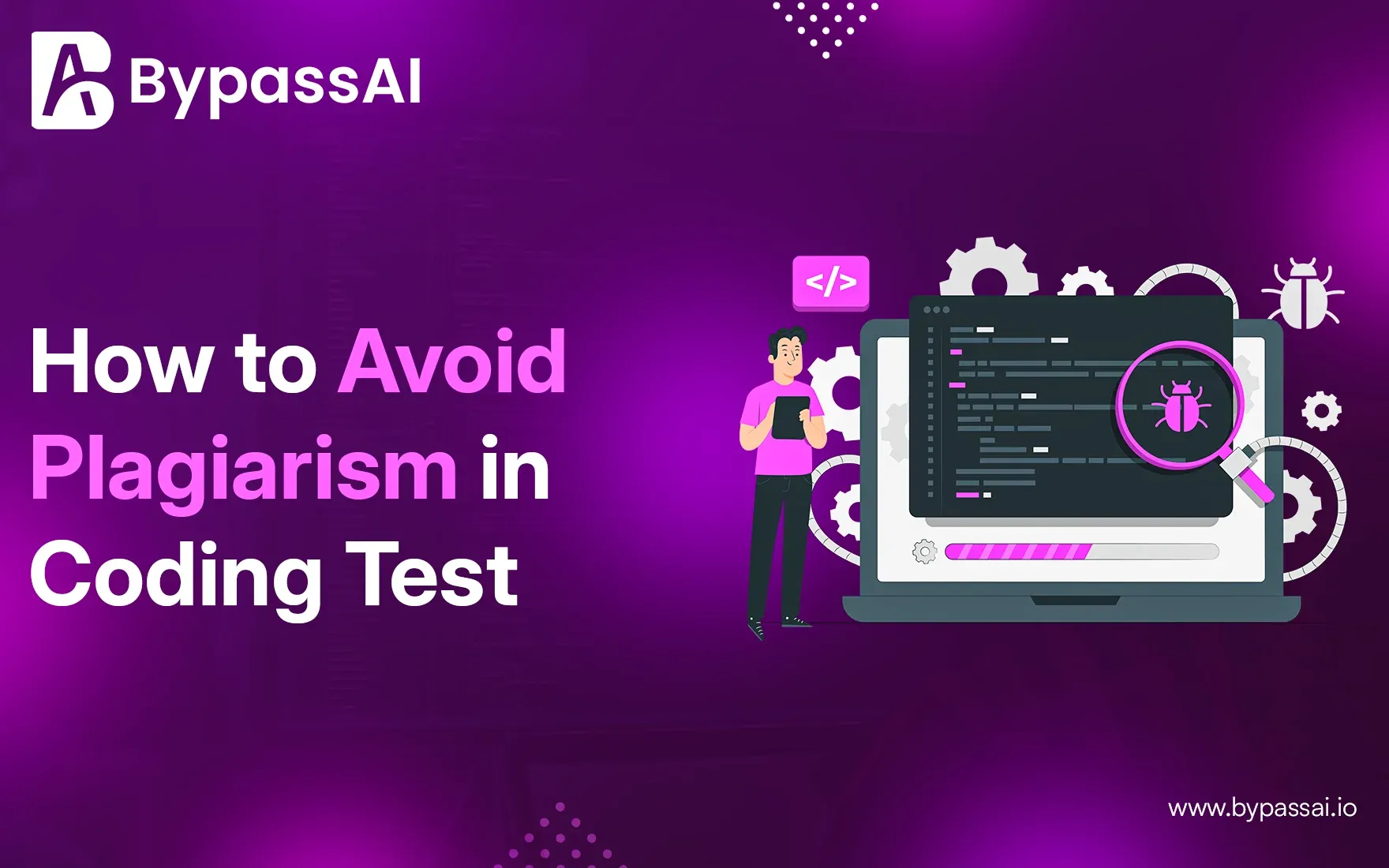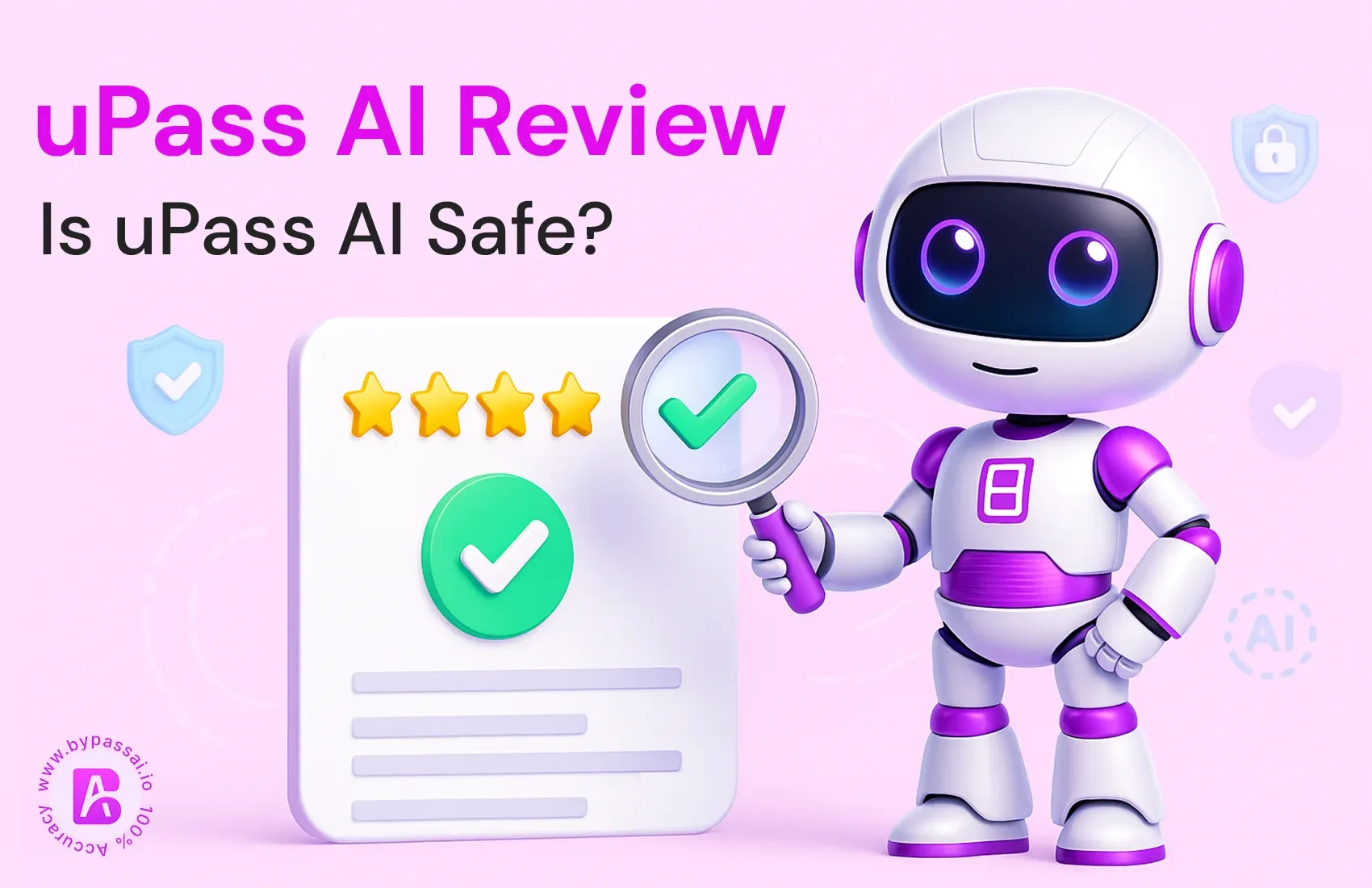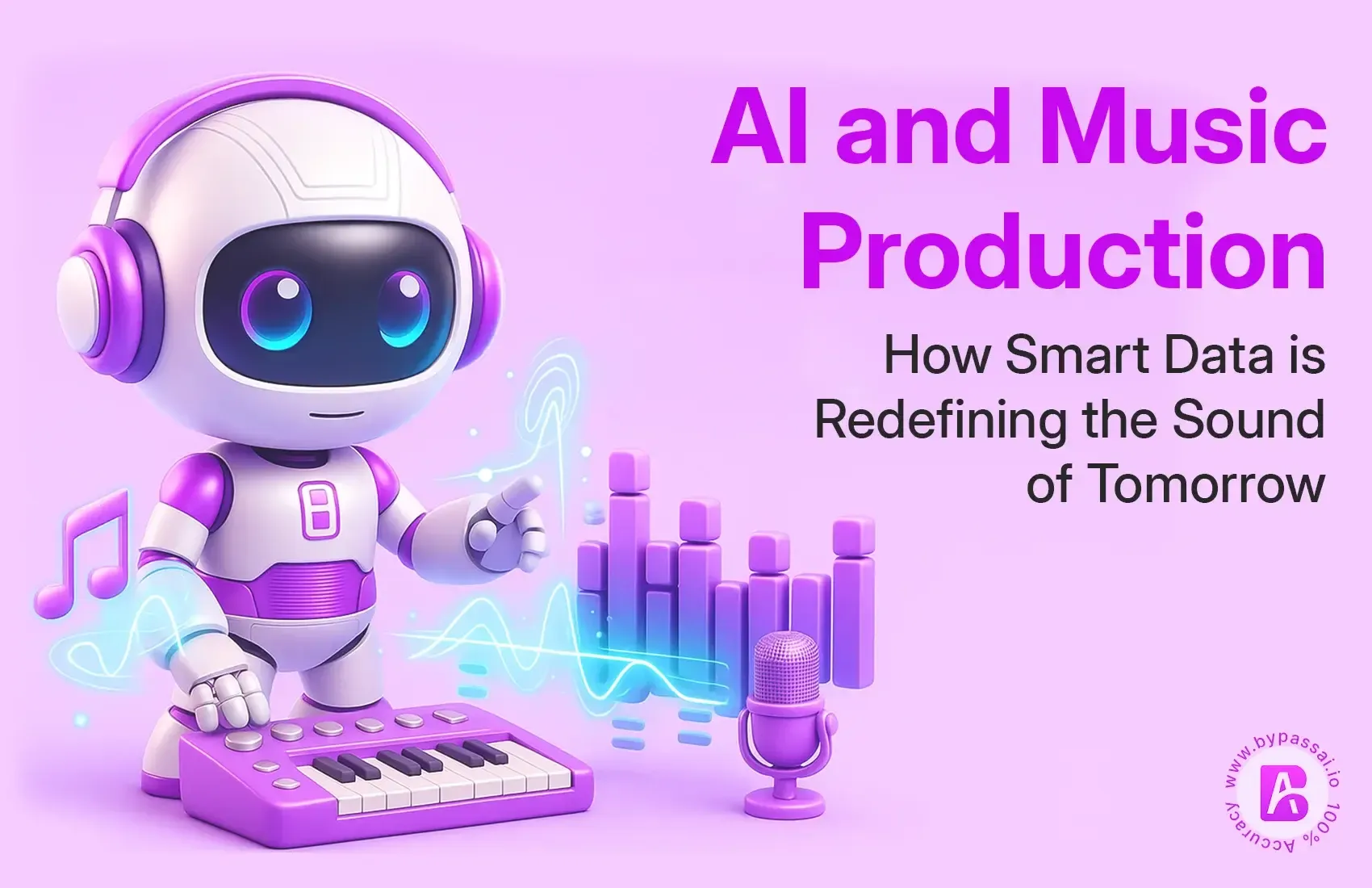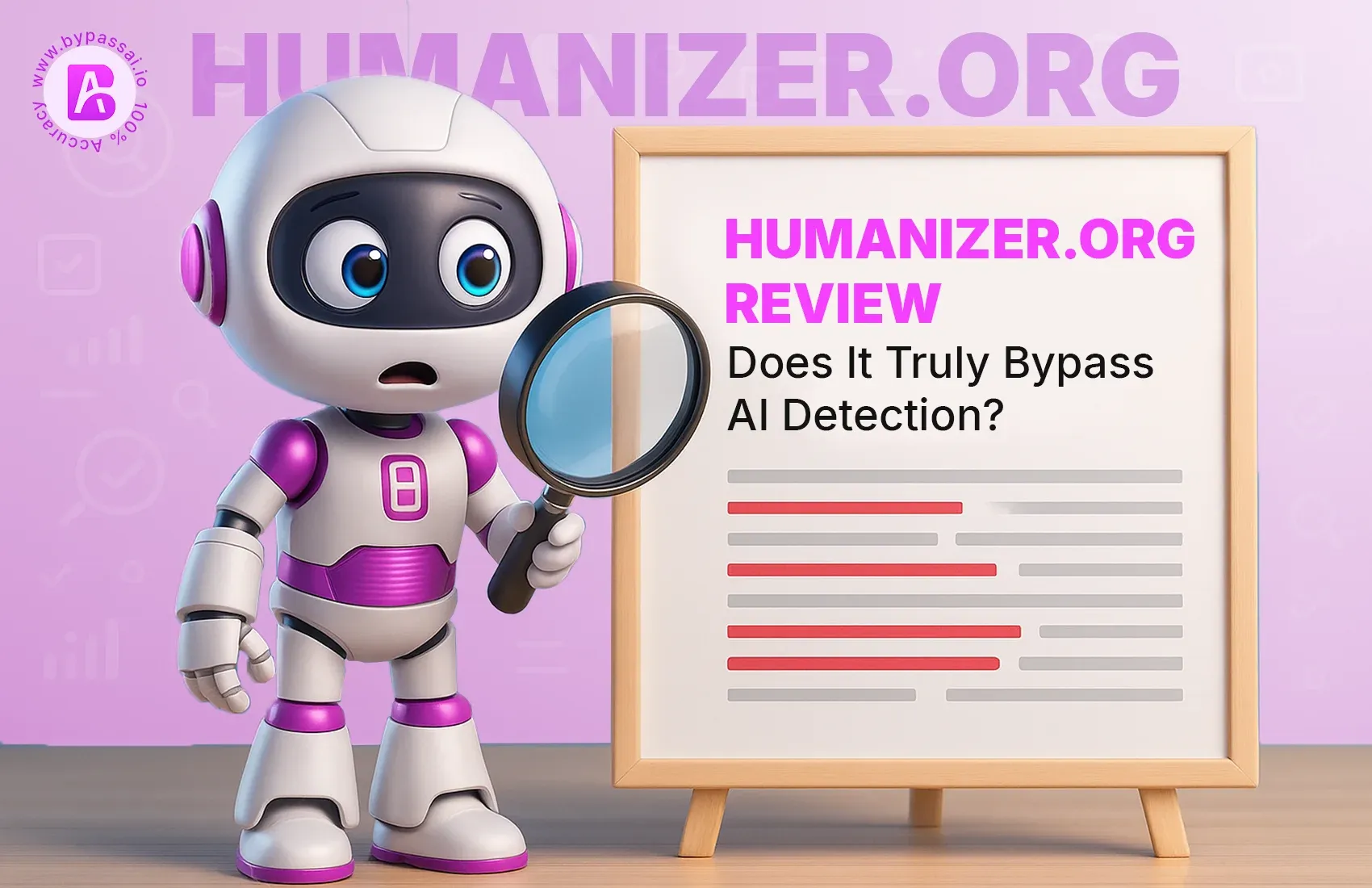Sign In
Welcome to Bypass AI! Sign in to continue your exploration of our platform with all its exciting features.
Forgot Password?
Don’t have an account ? Sign up
Sign Up
Embrace the Future with Bypass AI! Sign up now and let's rewrite the possibilities together.
You have an account ? Sign In
Enter OTP
We’ll send you an OTP on your registered email address
Back to Login
Forgot Password
We'll Send You An Email To Reset Your Password.
Back to Login
Enter OTP
We'll send you an email to reset your password.
Back to Login
Confirm Password
Please enter your new password.
TABLE OF CONTENTS
Quick Summary
Ever wonder about Code Plagiarism?
Can you identify Code Plagiarism?
Understanding the Importance of Code Modification
Guide to Alter Programming to Prevent Copying
Conclusion
FAQs
The realm of coding values uniqueness and honesty just like every other school or work field. It is a big deal if you copy other people's code, mainly during coding exams or checks. The easier coding becomes for everyone, and the more we work together, the more we are tempted to just copy code. But it is important to remember that copying in code is as wrong as it is in written work. In this blog, we will talk about what copying in coding means, how to stay away from it, and what tools can help you make your code your own.
Quick Summary
Just like people copying someone else's essays, programmers can also copy code. This is called plagiarism in coding. It could be simple copying, mixing code, copying the idea, or changing the code slightly to seem original. To stay honest, we need to know these points well, make proper changes to the code, and use apps like Bypass AI to spot and stop copying code.
Ever wonder about Code Plagiarism?

It is when someone unfairly uses or copies another person's code without giving them credit. Such dishonest behavior is seen as breaking important school and work rules, leading to tough punishments.
1. Verbatim Copying
Verbatim copying is simply the act of copying code word-for-word from a source. You may find this source from a webpage, another coder's efforts, or even a freely available project. When you do not give proper appreciation to the initial coder, it is considered copying. This represents the easiest to spot instance of copying and is strongly advised against.
2. Mosaic Plagiarism
Mosaic plagiarism happens when a coder picks bits of code from different places and sews them into a fresh program. Even though the isolated code pieces might be tweaked a bit, the grand design and reasoning stay like the original sources. Spotting this plagiarism type is tougher, but it is just as not right.
3. Algorithm Plagiarism
Algorithm plagiarism occurs when someone takes the thought process or steps from an algorithm they did not create, without giving credit to the original author. Despite the code itself being changed, the main idea stays the same. This is labeled as copying.
4. Refactoring Plagiarism
Refactoring plagiarism refers to small changes, including renaming variables or changing comments. Even though the main logic and structure of the code remain the same, it is considered plagiarism. While it easily bypasses the simplistic plagiarism detectors, it is still Plagiarism because of the lack of genuine transformation or proper referencing of that source code.
Also read this Aarticle : Top 12 plagiarism checker Tools in 2024
Can you identify Code Plagiarism?
Code plagiarism can now be easily checked with the tools that are improving every passing second. Now several tools, such as Bypass AI, have smart systems to find out parts of your code that may be matched with other known sources, despite being a bit tweaked. They do this by checking your code's logic, structure, and wording with a huge list of known code to be copied.
Understanding the Importance of Code Modification
Just changing the aesthetics of the code doesn't represent modification. This means a change of logic, structure, and functionality toward something developed in a truly different way. Proper modification of code really does help ensure that you're not copying someone else's work, but through your learning process, you may use and modify their work for your needs. It is, therefore, very instrumental in avoiding plagiarism and enhancing your coding skills.
Guide to Alter Programming to Prevent Copying
It requires a good mix of the right procedure and correct resources to prevent plagiarism in programming. So, how to be sure that your program is original?
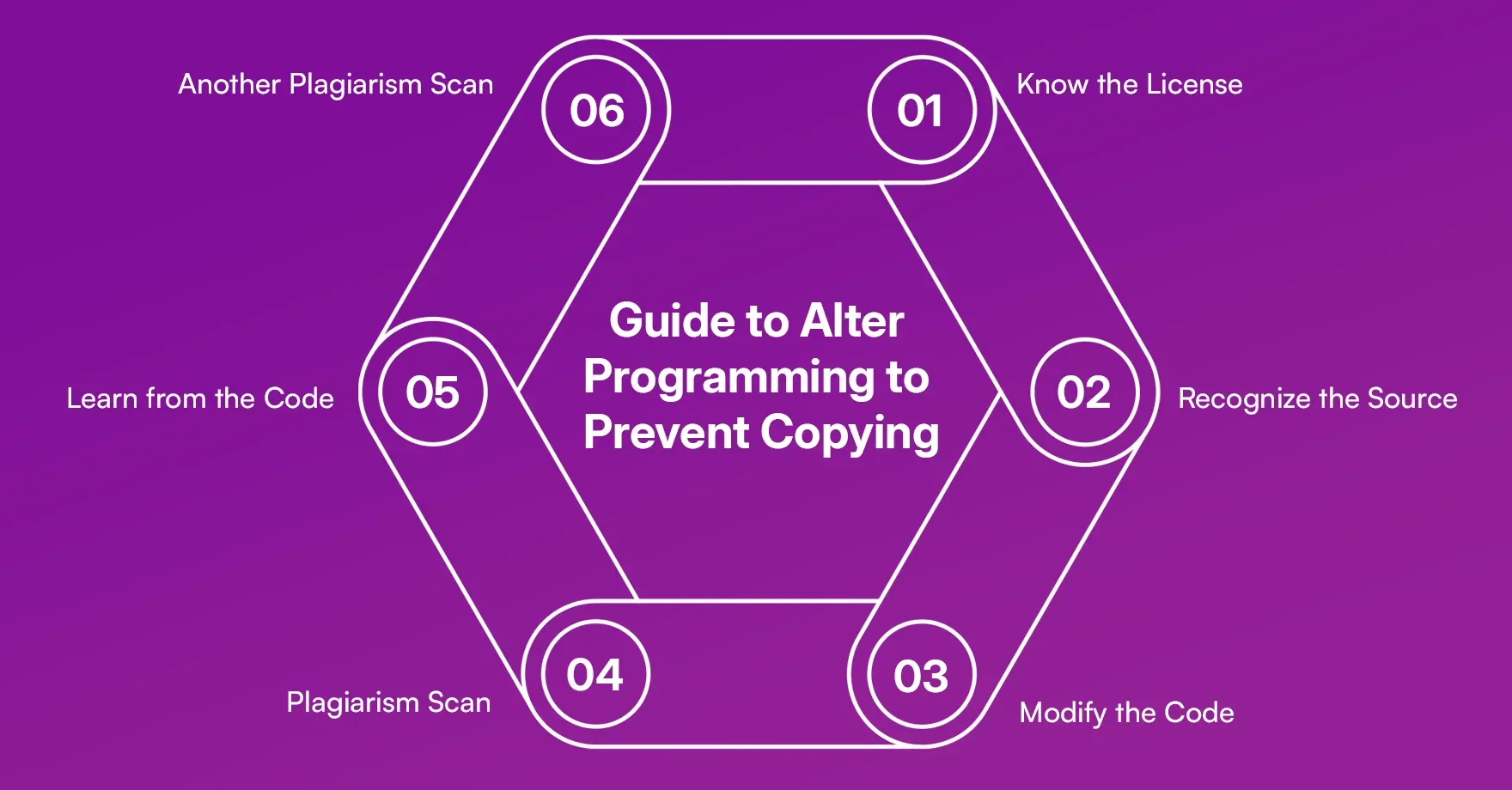
1. Know the License
Be sure that you know the licensing of any software you are to acquire from any source. Some of the software would be open source, freely usable for modifications and distribution, while others would be restricted. Always respect the license under which the software is released.
2. Recognize the Source
Whenever you borrow code, always give credits where due. Add comments that identify the source of the code and its creator. Providing credits avoids plagiarism.
3. Modify the Code
In case you are utilizing code from some other place, it is important to make significant changes. It doesn't mean modifying variable names or comments and changing its logic, structure, and how it works. Doing so will not only keep plagiarism at bay but will help you grasp the code better.
4. Plagiarism Scan
Before you submit your code, run it through a tool like Bypass AI to detect potential problems. These tools find matches between your code and previously written ones, hinting you to make extra changes if needed. Bypass AI is very good at detecting copied code, as it reviews not only the wording but also the structural elements.
5. Learn from the Code
Not just copy, learn from the code. Learn why it works that way and how you could modify it for your particular requirements. This way, you dodge plagiarism and grow as a coder.
6. Another Plagiarism Scan
After making changes, it is worth it to use the plagiarism checker of Bypass AI again on your code. This tool is designed to pinpoint even slight similarities between your code and what has already been done, securing that your final work is unique.
Conclusion
To avoid code plagiarism, not copying directly is not enough. Understand the essence of licenses, give credit to references, and introduce significant changes in the formation and system—that is how you ensure novelty in your programming assessments and tasks. Unintentional copying can pop up in any coding languages; thus, code hunting tools and plagiarism checkers can be helpful in detecting and sidestepping likely problems. Bypass AI calls for the protection of every digital asset, including code. Let your ingenuity not be impeded with plagiarism concerns.
FAQs
1. Can you define plagiarism in coding?
At its core, plagiarism in coding means stealing or loosely replicating someone else's programming code without giving them due credit. It includes directly mimicking code, making minor changes, or using the same structure, all without acknowledging the original creator.
2. What are ways to prevent plagiarism during coding tests?
To stop plagiarism on coding exams, always modify any borrowed code and understand it, give correct credit to all sources, and use resources like Bypass AI for checking any unfair replication before turning it in.
3. What does refactoring plagiarism mean?
It's when a coder only changes minor things like the names of variables, but the main structure and logic of the code stay the same as the initial piece. This practice is still viewed as plagiarism.
4. Can you check the code for plagiarism?
Yes, indeed! Services like Bypass AI provide extensive code plagiarism detection. They check your code's setup, function, and syntax for similarities to existing samples.
5. Why change the code?
Changing code is important for being unique. It means modifying its function, structure, and logic to create something different, preventing plagiarism and boosting your coding comprehension.

